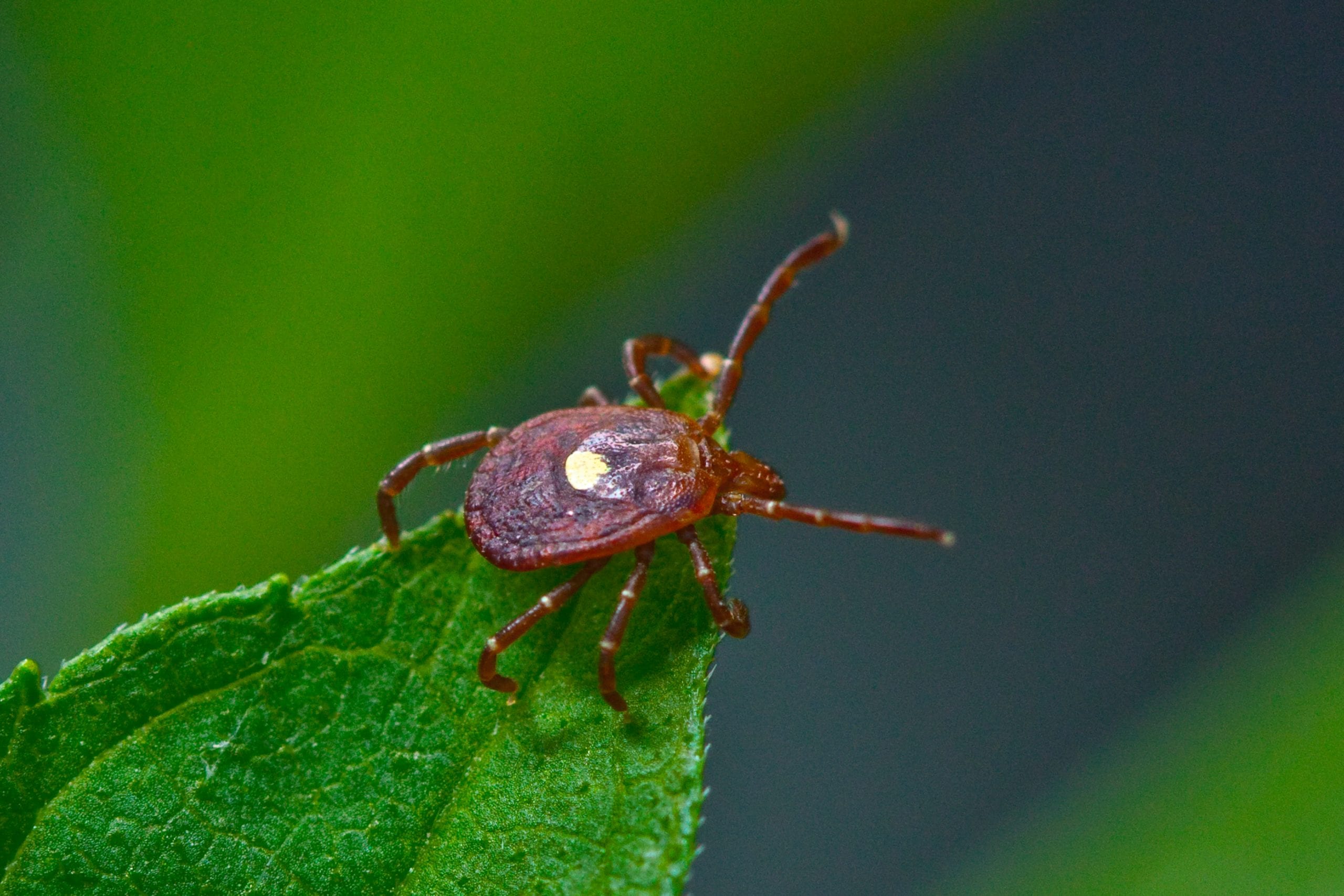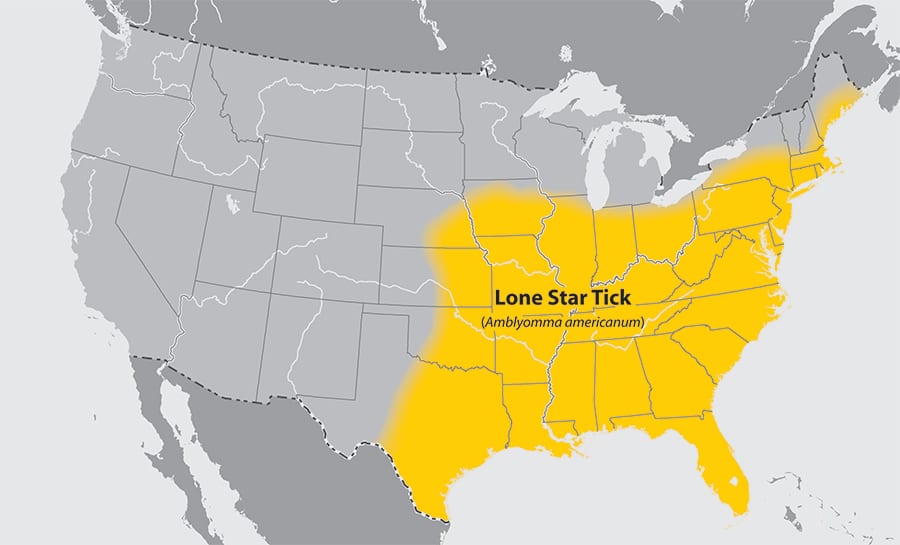How do you like your steak? Preferably not deadly? Well, maybe you should keep an eye out for ticks…yep, ticks. Ticks are quite the pesky problem, especially during the summer months, when they're active and we're more likely to be outside. They're already pretty notorious for spreading diseases like Lyme and Rocky Mountain Spotted Fever, but a lesser-known disorder has been making headlines.This tick-borne disease is commonly called Alpha-gal syndrome, and it is primarily transmitted by the Lone Star tick here in the southeastern US. This disease is a doozy because it causes delayed meat-induced anaphylaxis – a potentially deadly meat allergy.

I saw this up close and personal when it happened to my coworker, Brad. On June 22, Brad Fretwell, age 44, developed a face full of hives and severe lower back pain. Over the next few weeks, his hives got worse – covering his upper legs, midsection and parts of his arms. As the red blotches on his face progressed to dark bruises, many of us at work commented that it appeared as if he'd been punched in both eyes. His back and joints continued to ache. His doctor couldn't pinpoint the problem. Brad was prescribed steroids to help minimize his symptoms, but the hives and pain kept coming back with a vengeance.
Brad was at his wit's end by the time he remembered he'd been bitten by a tick back in May, and suddenly it all made sense. He had heard about alpha-gal syndrome on the news, and his wife even works with another individual who has it as well. He took the suspected diagnosis to his doctor, who suggested eliminating meat from his diet to test the suspicion. Brad's been a vegetarian since mid-July and has been hive-free since then as well, but it took over 3 weeks for Brad to finally get his life-changing diagnosis.
The irony in this tale is that Brad and I work in a laboratory that studies rare diseases and complex carbohydrates, and Alpha-Gal is a rare disease caused by an allergic reaction to a complex carbohydrate. You're probably thinking “But I thought it's an allergic reaction to MEAT not CARBS!†However, to understand this allergy, you have to look at it on a molecular level. Every single living cell is coated with a layer of complex carbohydrates on its cell surface, which you can read more about here. These complex carbohydrate molecules remain on the surface of the meat cells; the name “alpha-gal†is actually describing a particular type of complex carbohydrate that is on the surface of meat cells. “Meatâ€, in this case, is referring to any non-primate mammals – cows, pigs, deer, mice, etc. However, they are not the exact same structure as the ones that are on your human cells, and herein lies the problem!

Alpha-gal was previously found to cause a meat allergy in cancer patients receiving a chemotherapy called Cetuximab, after the presence of the alpha-gal molecule was found in the drug. Since meat allergies are uncommon, compared to peanut allergies for instance, researchers made the connection between the cancer cases and tick-bite patients and started testing individuals reporting meat allergies for increased levels of alpha-gal in their blood.
Scientists aren't exactly sure how a tick bite causes the allergic reaction to meat. One suspected mechanism is that the tick first bites an animal, like a cow or deer (any non-primate mammal carries the alpha-gal molecule on their cells), and then the alpha-gal molecule is in the tick's saliva when it bites a human. The human's immune system doesn't recognize the molecule and designates it as “foreignâ€. Then when the unfortunate tick-bite recipient eats a piece of meat, the body's immune system recognizes the “foreign†molecule on it and goes into attack-mode, resulting in an allergic reaction.
Currently, this is only a hypothesis – researchers are still trying to sort out many of the components in this theory, like why many patients don't experience their symptoms until a few hours after they've consumed meat. Allergic reactions to food triggers can often be pretty instant, and this delayed response seen in alpha-gal patients can make diagnosis tricky.

While there are still a lot of black boxes to figure out with regards to this disease, it's apparent that it is a tick-borne disease, and those ticks are out there. Although it's considered a rare disease, there could be more than 5000 reported cases since 2006. This number is really just an estimate because the cases aren't always well documented, but it is believed that numbers could be on the rise as the Lone star tick's habitat spreads. With more information and awareness, better data can be collected.There's currently no cure, and researchers aren't quite sure if the allergy can go away on its own, but research continues to better understand this disease. Alpha-gal may be rare, but knowing about it and learning best practices on how to avoid tick bites may be worth your time, before the “steaks†get too high.
About the Author
 |
Michelle Dookwah currently serves as an Assistant Editor for Athens Science Observer and is a graduate student at the University of Georgia Complex Carbohydrate Research Center, where she studies rare neurological disorders using patient stem cells. She's pretty passionate about science and science communication. However, she also enjoys numerous activities in her free time, including reading, listening to podcasts and audiobooks, hiking, baking, and obsessing over her labradoodle named Goose! More from Michelle Dookwah. |
About the Author
-
athenssciencecafehttps://athensscienceobserver.com/author/athenssciencecafe/April 17, 2020
-
athenssciencecafehttps://athensscienceobserver.com/author/athenssciencecafe/April 12, 2020
-
athenssciencecafehttps://athensscienceobserver.com/author/athenssciencecafe/April 3, 2020
-
athenssciencecafehttps://athensscienceobserver.com/author/athenssciencecafe/March 30, 2020







